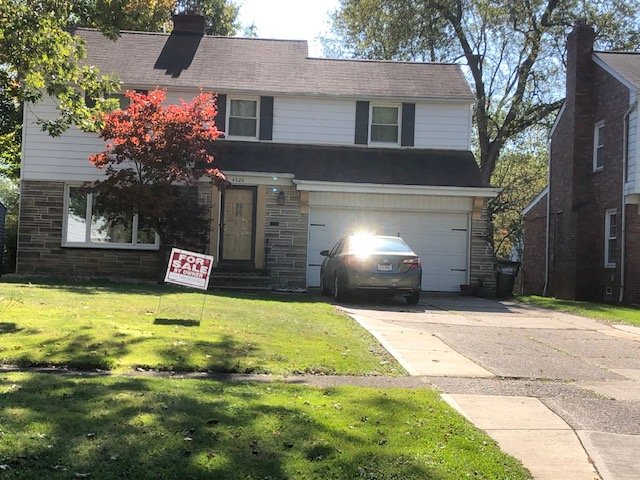
When you’re preparing to purchase a home, one of the most important financial decisions you’ll make is choosing a mortgage. Securing a mortgage with a favorable interest rate can save you thousands of dollars over the life of the loan. But with so many lenders and fluctuating rates, it can be overwhelming to know where to start. In this informative post, we’ll explore essential tips and tricks to help you find the best mortgage rates.
Understanding Mortgage Rates
Before diving into strategies for finding the best mortgage rates, it’s important to understand what influences them. Mortgage rates are determined by several factors, both external and personal.
1. Economic Conditions: Factors like inflation, unemployment rates, and the Federal Reserve’s interest rate decisions can all influence mortgage rates. When the economy is doing well, rates tend to rise as demand for homes and loans increase. Conversely, rates may decrease in slower economic periods.
2. Your Credit Score: Lenders use your credit score to assess how risky it might be to lend you money. A higher score (generally above 740) indicates that you are more creditworthy, and you’ll often receive lower interest rates as a result. A lower score could mean higher rates or difficulty qualifying for a mortgage at all.
3. Loan Amount and Down Payment: Larger down payments can reduce your mortgage rate because you’re reducing the lender’s risk. If you can afford a 20% down payment or more, you’ll typically receive a lower rate than someone with a smaller down payment. Additionally, the size of the loan matters; conforming loans, which are under the limits set by the Federal Housing Finance Agency (FHFA), usually have lower rates compared to jumbo loans.
4. Loan Type and Term: Different loan types, such as fixed-rate or adjustable-rate mortgages (ARMs), come with varying rates. ARMs tend to start with lower rates that can adjust over time, while fixed-rate mortgages lock in a rate for the duration of the loan. Shorter loan terms (like 15-year fixed) often have lower interest rates than 30-year terms.
Tip #1: Improve Your Credit Score
Your credit score is one of the key determinants of the mortgage rate you’ll qualify for. If you’re months or years away from applying for a mortgage, now is the time to work on improving your credit score.
- Check Your Credit Report: Start by getting a free copy of your credit report from all three major credit bureaus (Equifax, Experian, and TransUnion). Check for any errors or inaccuracies and dispute any discrepancies that could be negatively impacting your score.
- Pay Down Debt: Reduce your credit utilization by paying down balances on your credit cards and loans. Ideally, your credit utilization should be below 30% of your available credit.
- Make Timely Payments: Set up automatic payments or reminders to ensure you pay all your bills on time. Late payments can have a significant impact on your credit score.
Even small improvements in your credit score can lead to a noticeable reduction in your mortgage rate, potentially saving you thousands over the life of your loan.
Tip #2: Shop Around for Lenders
The mortgage rate you receive can vary significantly from one lender to another, so it’s crucial to shop around. Many prospective homeowners make the mistake of accepting the first offer they receive.
- Get Multiple Quotes: Aim to get quotes from at least three to five lenders. Make sure you’re comparing apples to apples by requesting quotes for the same type of loan (e.g., 30-year fixed-rate mortgage) and term.
- Use Online Rate Comparison Tools: There are numerous websites and tools that can help you compare mortgage rates from different lenders. Tools like Bankrate, Zillow, and NerdWallet allow you to quickly see which lenders offer the most competitive rates based on your location and credit score.
- Consider Both Banks and Non-Bank Lenders: Traditional banks aren’t the only option for getting a mortgage. Non-bank lenders like credit unions and online lenders often offer competitive rates and may have more flexibility in underwriting.
Keep in mind that the lowest rate isn’t always the best deal if the lender has high fees. Carefully review each lender’s closing costs, application fees, and any prepayment penalties to determine the total cost of the mortgage.
Tip #3: Lock in Your Rate
Once you’ve found a favorable mortgage rate, consider locking it in. Mortgage rates fluctuate, sometimes daily, based on economic conditions and market factors. A rate lock guarantees that the interest rate won’t change for a specified period, typically between 30 and 60 days.
If you believe rates will rise before you close on your loan, a rate lock can protect you from paying a higher rate later. However, if rates are likely to fall, you may want to delay locking in or see if your lender offers a “float down” option, which allows you to lock in a lower rate if market rates decrease before closing.
Tip #4: Opt for a Shorter Loan Term
While most people opt for a 30-year mortgage due to the lower monthly payments, shorter loan terms often come with lower interest rates.
- Consider a 15-year Mortgage: Although your monthly payment will be higher, a 15-year fixed-rate mortgage typically has a significantly lower interest rate compared to a 30-year loan. Over time, you’ll pay far less in interest.
- Look at Adjustable-Rate Mortgages (ARMs): If you plan to move or refinance within a few years, an adjustable-rate mortgage might be a better fit. ARMs offer lower initial interest rates for a set period (usually 5 or 7 years) before adjusting annually. This could save you money in the early years of your loan, but be aware of the risk that your rate could increase later.

Tip #5: Make a Larger Down Payment
The more money you can put down, the better your chances of securing a lower mortgage rate. A larger down payment reduces the lender’s risk by increasing your equity in the home from the start.
For most conventional loans, a down payment of 20% or more is ideal because it eliminates the need for private mortgage insurance (PMI), which is an additional monthly expense if your down payment is less than 20%.
Even if you can’t reach the 20% mark, increasing your down payment from, say, 5% to 10% can make a noticeable difference in your mortgage rate and overall costs.
Tip #6: Time Your Application
Mortgage rates can fluctuate based on seasonal trends. Historically, rates tend to be lower during the winter months, when fewer people are buying homes. If you have flexibility in your home buying timeline, consider applying for a mortgage during these slower periods.
Additionally, keep an eye on economic news, particularly Federal Reserve rate announcements. If you know rates are about to increase, you might want to lock in a rate or expedite your application. Conversely, if rates are expected to drop, waiting could pay off.
Tip #7: Understand Points and Fees
Some lenders allow you to “buy down” your interest rate by paying for mortgage points upfront. Each point typically costs 1% of the loan amount and can reduce your interest rate by around 0.25%.
Before deciding whether to buy points, calculate the break-even point – that is, the amount of time it will take to recover the cost of the points through lower monthly payments. If you plan to stay in the home long enough to reach the break-even point, purchasing points can save you a significant amount of money over the loan term.
Conclusion
Finding the best mortgage rate requires preparation, research, and strategic decision-making. By improving your credit score, shopping around for lenders, and understanding how various factors like loan terms, down payments, and points affect your rate, you can secure a mortgage that fits your financial goals.
With a little effort and these helpful tips, you’ll be well on your way to locking in a competitive rate and saving money on your home loan. Happy house hunting!
